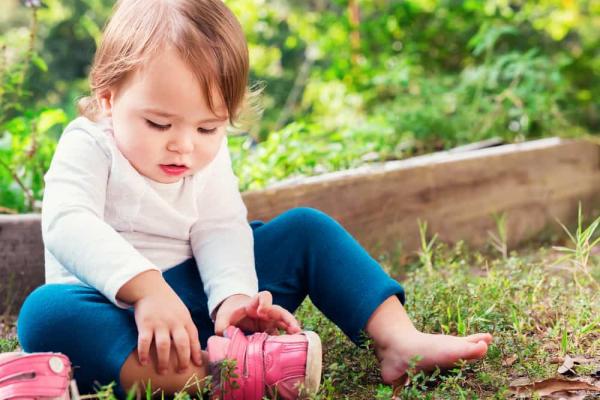
Four year olds care less about the brand of shoe they wear and matching articles of clothing. They don't worry about looking the coolest - yet. So why do parents worry so much? Doesn't it bother you that you'll constantly have to buy shoes in different sizes until they're 16? Don't forget about your impulsive shoe purchases in between, too.
In a report done by the American Apparel & Footwear Association (AAFA), US-based consumers bought the most shoes per capita in 2013, with each individual (children included) acquiring 7 ½ pairs of shoes. Multiply that by 10 years, and you would have owned 75 pairs average, separately.
1. You (kinda) save more if they have siblings
Although it is unhygienic to share shoes, pairs that aren't completely worn out, or are still as good as new, can be handed down, especially those that were worn less than 5-8 times due to a sudden growth spurt. But keep in mind that if you encourage the use of a hand me down pair, you are forcing your child's foot into a shoe that has already molded to the shape of someone else's foot. This will cause them to get blisters.
2. Take note of their growth pattern
Keep track of the proportions of their feet- how long, how wide, how deep their arches go. Observe how long a pair usually lasts. Don't buy shoes a half size or full size bigger than their actual size. This is not the time to be frugal.
According to foot and ankle specialist Steven G. Tillett, DPM, "The rule of thumb here is that you should be able to slip your pinky finger in the heel, but only up to the first knuckle. Anything more than that and the shoe is too big- anything less and it's too tight."
3. Choose generic shoes
Are you sure you want to cash out on the latest pair of Nikes for your four-year old? Toddlers could care less about brands, unless they're Disney or cartoon characters. Chances are they'll grow out of them in less than half a year.
Also keep an eye out for sales and clearances. Comfort will always be more important than the brand, but if the shoe fits and functions well, why think twice about buying those perfectly cushioned Skechers on half-off?
Save money by categorizing them according to "dirty" and "clean" shoes. By alternating them, they last longer.
4. Consider comfort
Although it is rare for children to have heel or back pain, therapeutic shoes are also available for kids. Unfortunately, some stores are limited to minor kid sizes. Children with bigger sized feet who suffer from heel pain are better off selecting from adult-sized orthopedic shoes.
Young kids don't necessarily complain about their shoes feeling tight, or they just ignore it. Make sure you check their footwear every two weeks or every month- unless you plan on practicing the Chinese art of foot binding...
5. Sturdiness
Opt for shoes or sandals with straps to ensure that they are safe and won't slip off. This way, it'll also be easier to determine whether the sandals still fit after a few months. Is their heel hanging off the back part of their sandal? The shoe obviously needs to be replaced.
When it comes to making sure the soles are dependable, choose non-skid soles that have grips. For active kids, get stiffer soles, younger ones need more flexible and softer soles because the bones in their feet are still developing. The main concern for parents when it comes to infants is keeping their feet warm.
Select pairs that are easy to put on. For those who haven't learned how to tie their shoelaces yet, you can opt for Velcro-strapped sneakers. There's also the alternative of shoes with stretchy materials and durable slip-ons.
For slightly older toddlers, there are hook and loop fasteners. Once they get the hang of getting dressed on their own, you can slowly ease them into learning how to tie shoelaces.
As much as possible, avoid buying kids shoes online. Take them shopping with you. Bring a pair of socks just in case to see how it'd fit with the shoes on -and for sanitation purposes. You never know what kind of germs the person who tried them before you carried. Pass up settling for the display pair; when you've made a final decision always ask for a new pair instead.
Schedule your shopping date in the afternoon, since it's when our feet are at its biggest due to swelling.
Lastly, avoid decorative and light-up shoes as the small parts may be choking hazards. Plus, did you hear about the light-up shoe that ignited a car?

